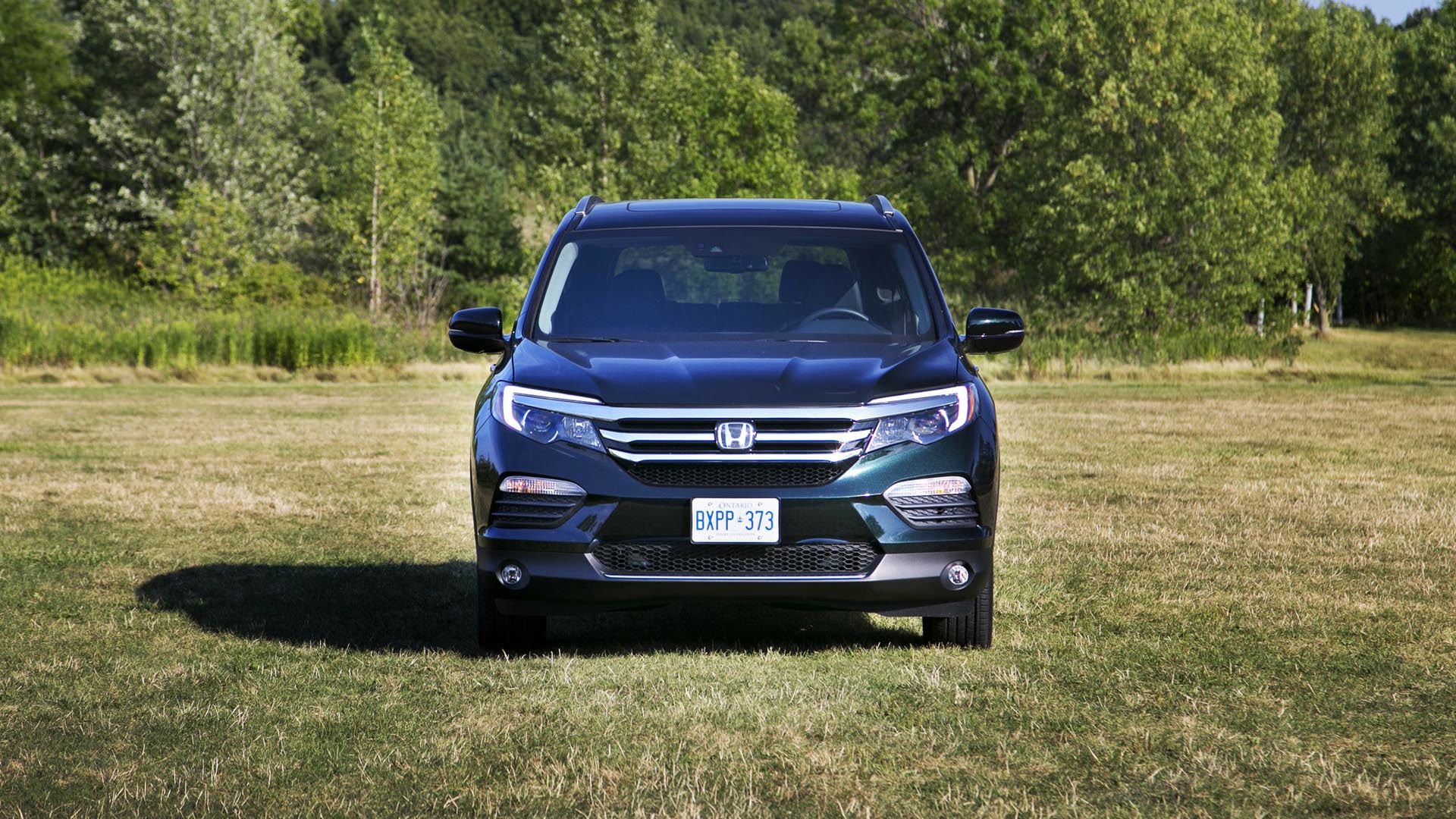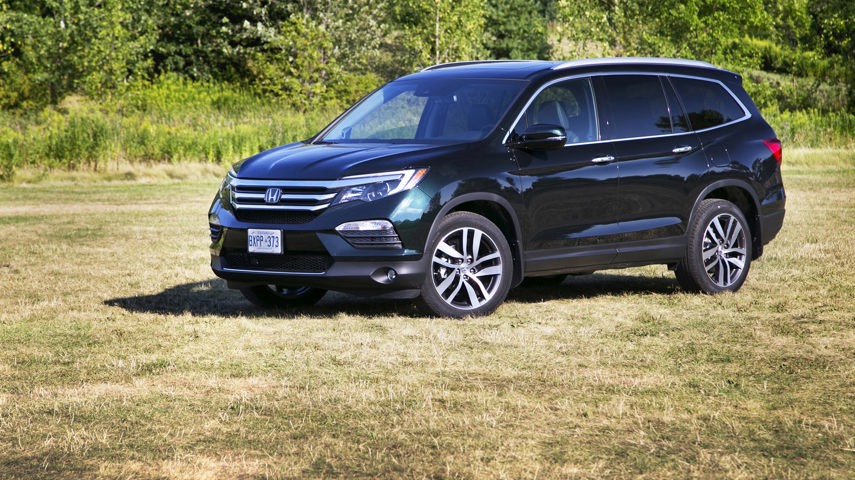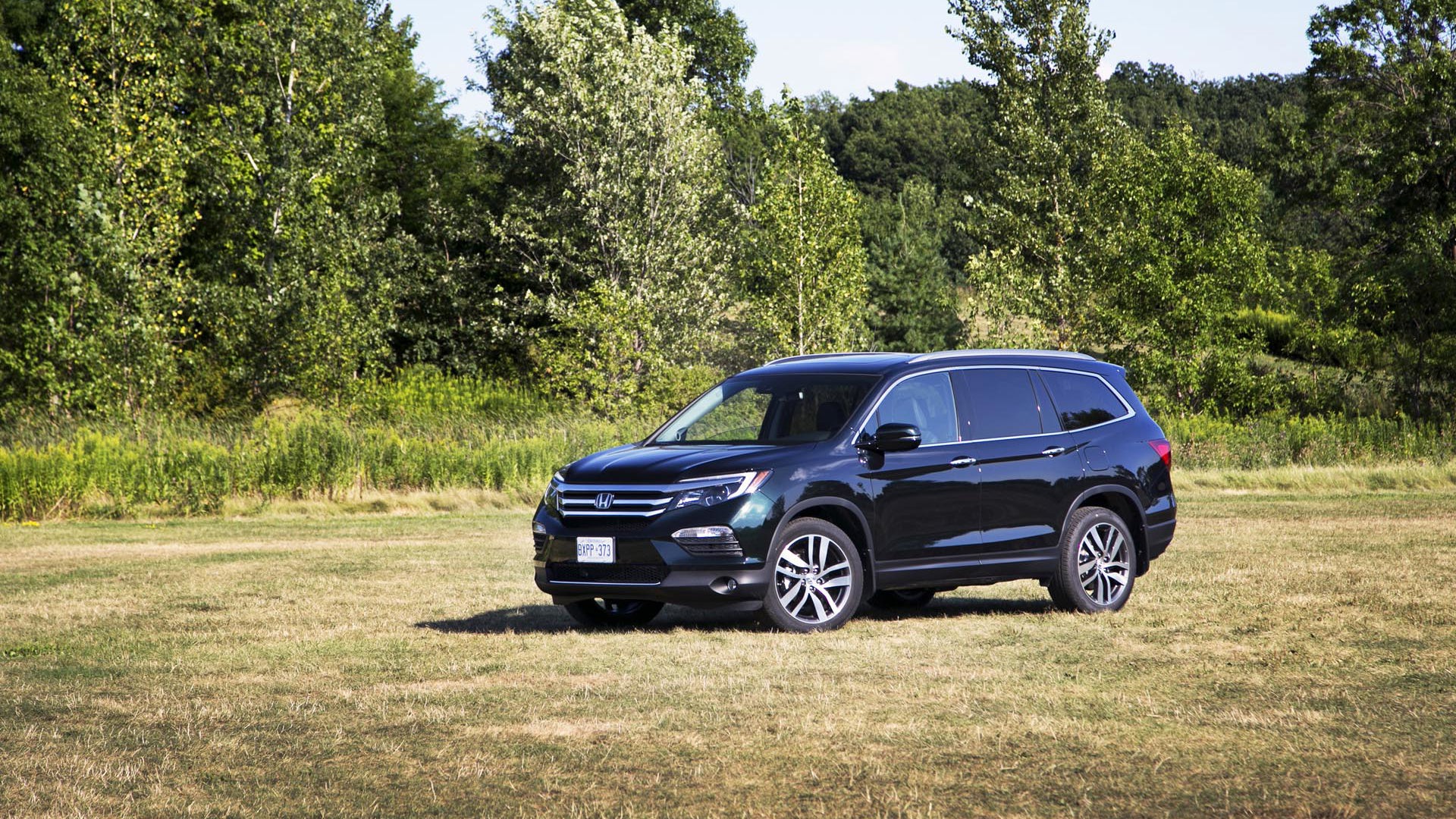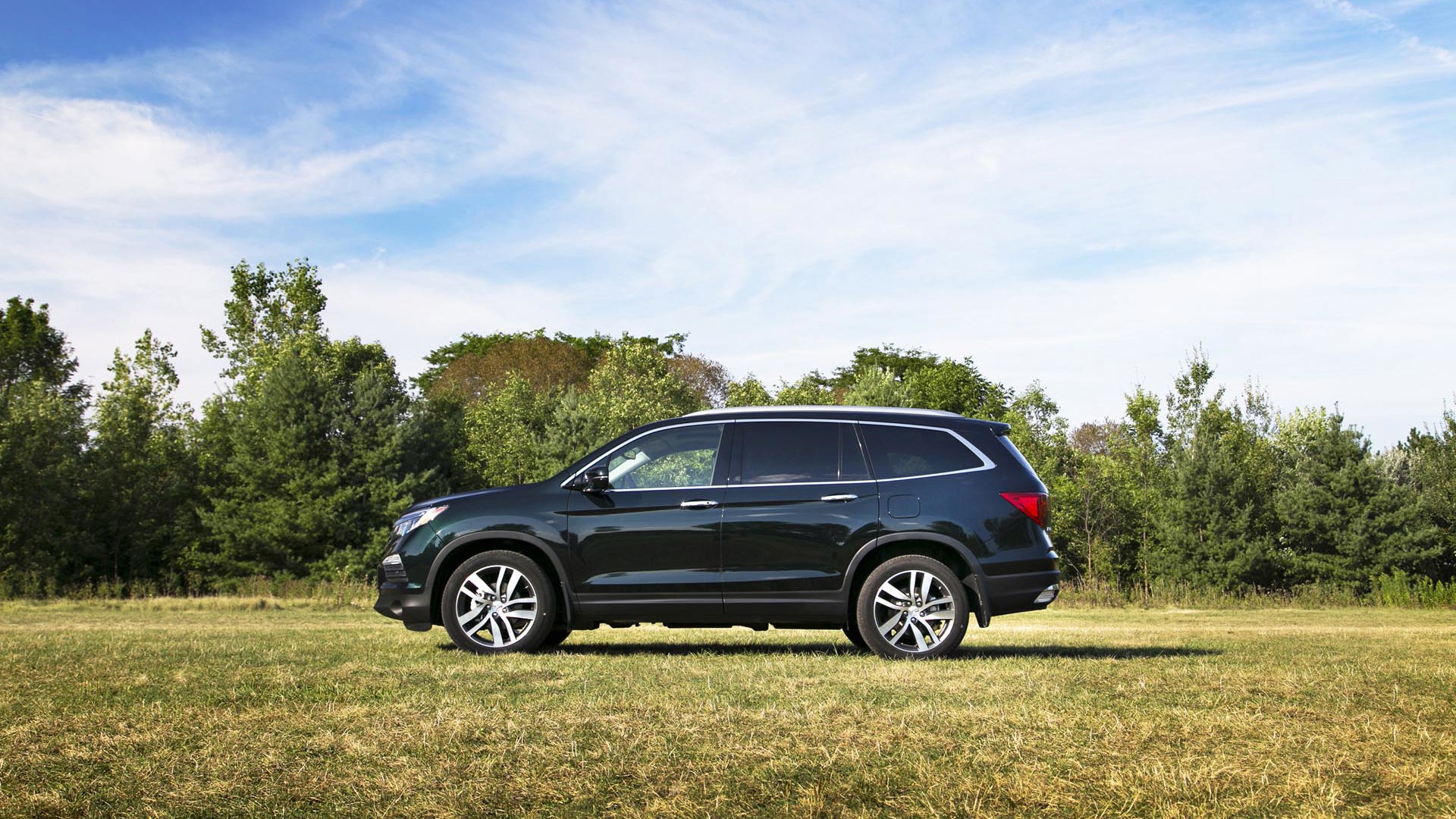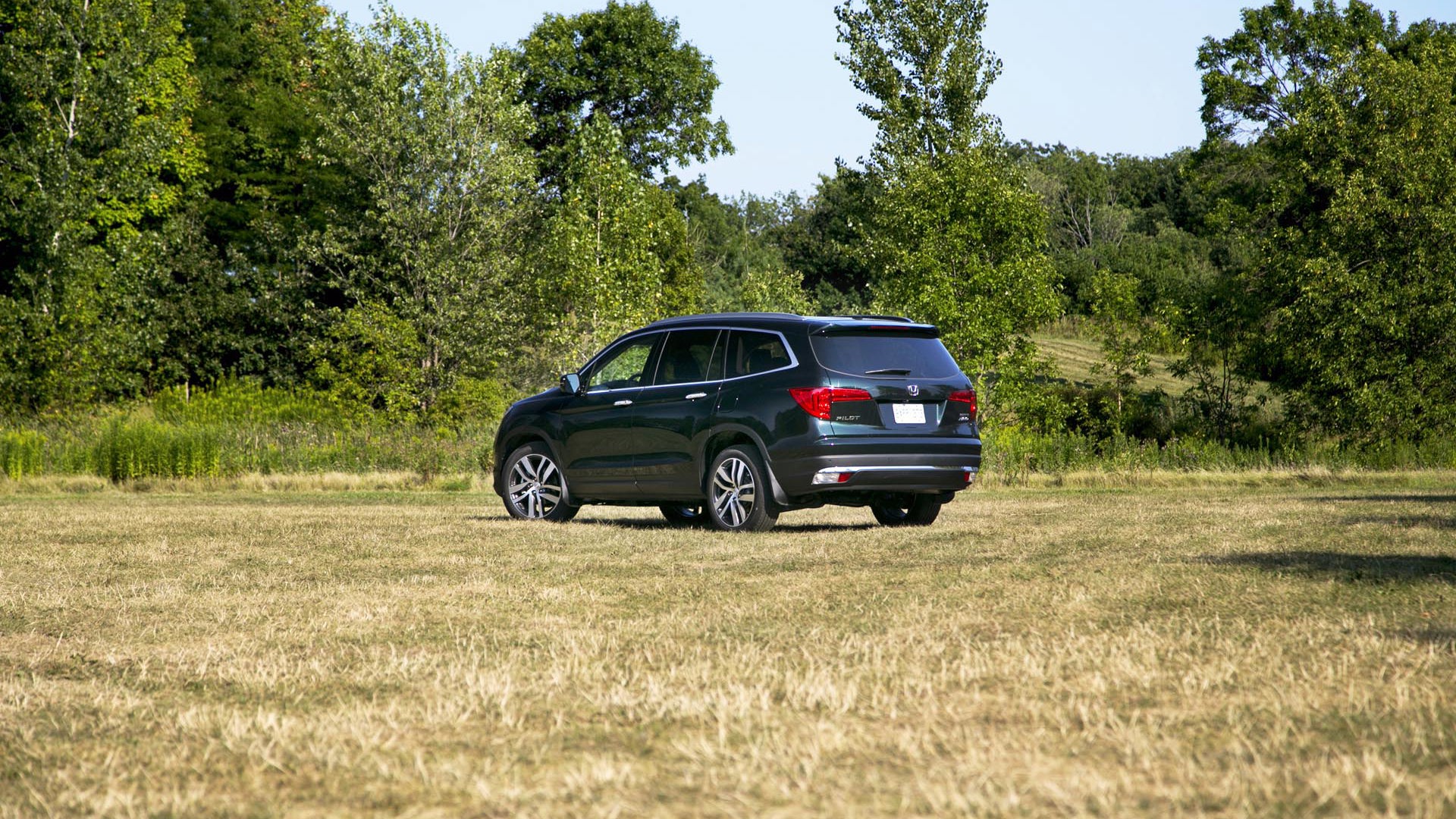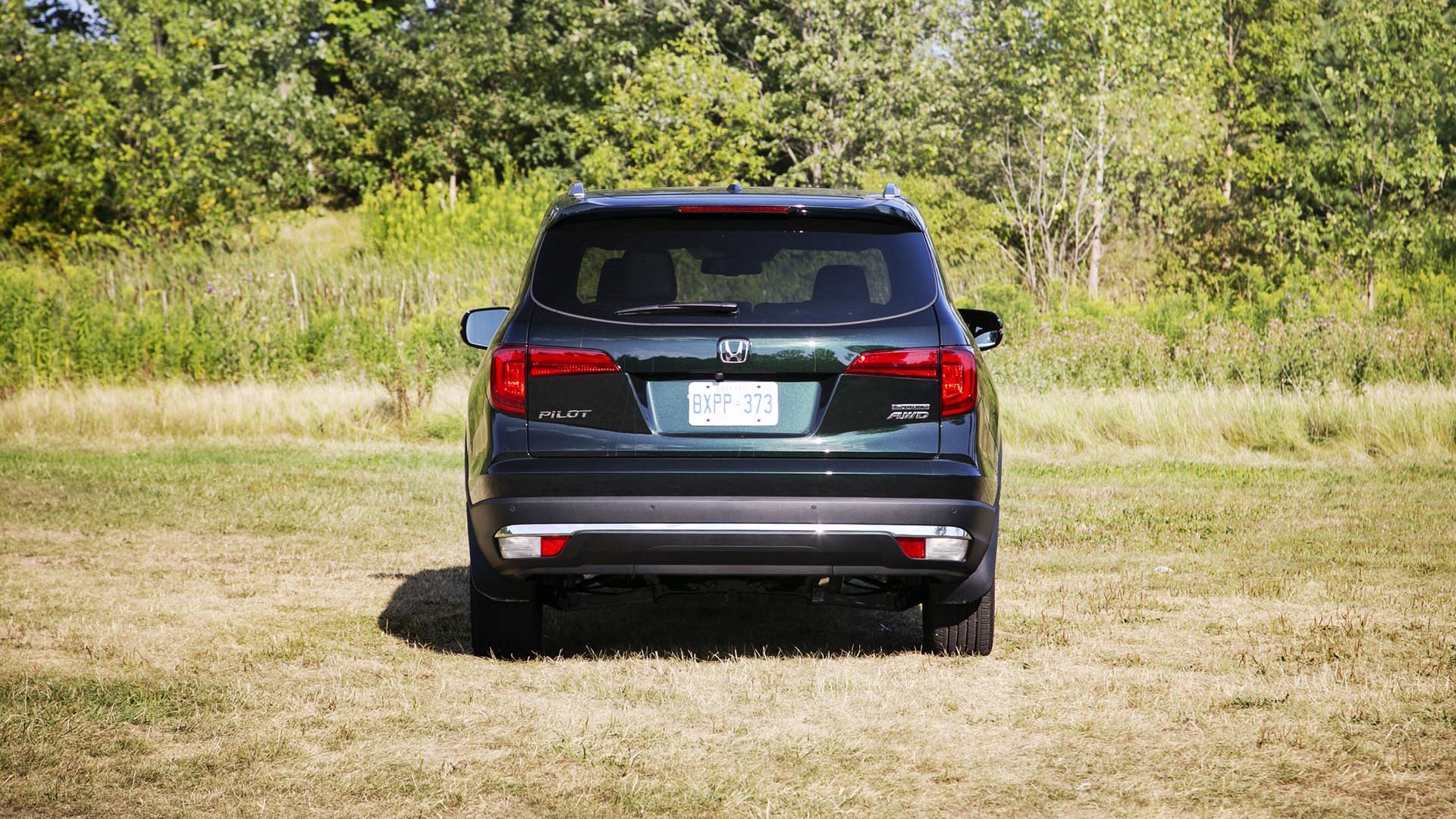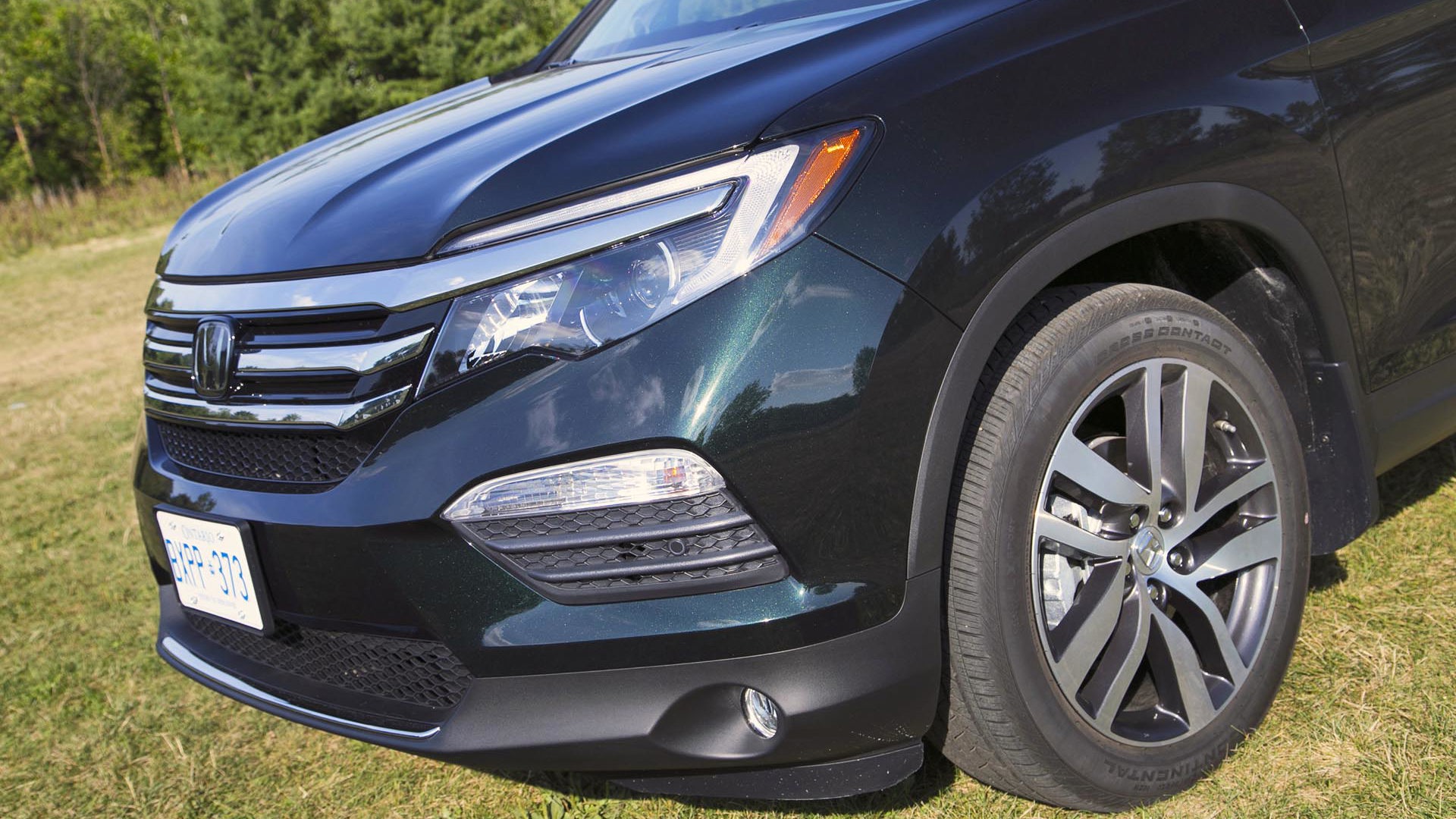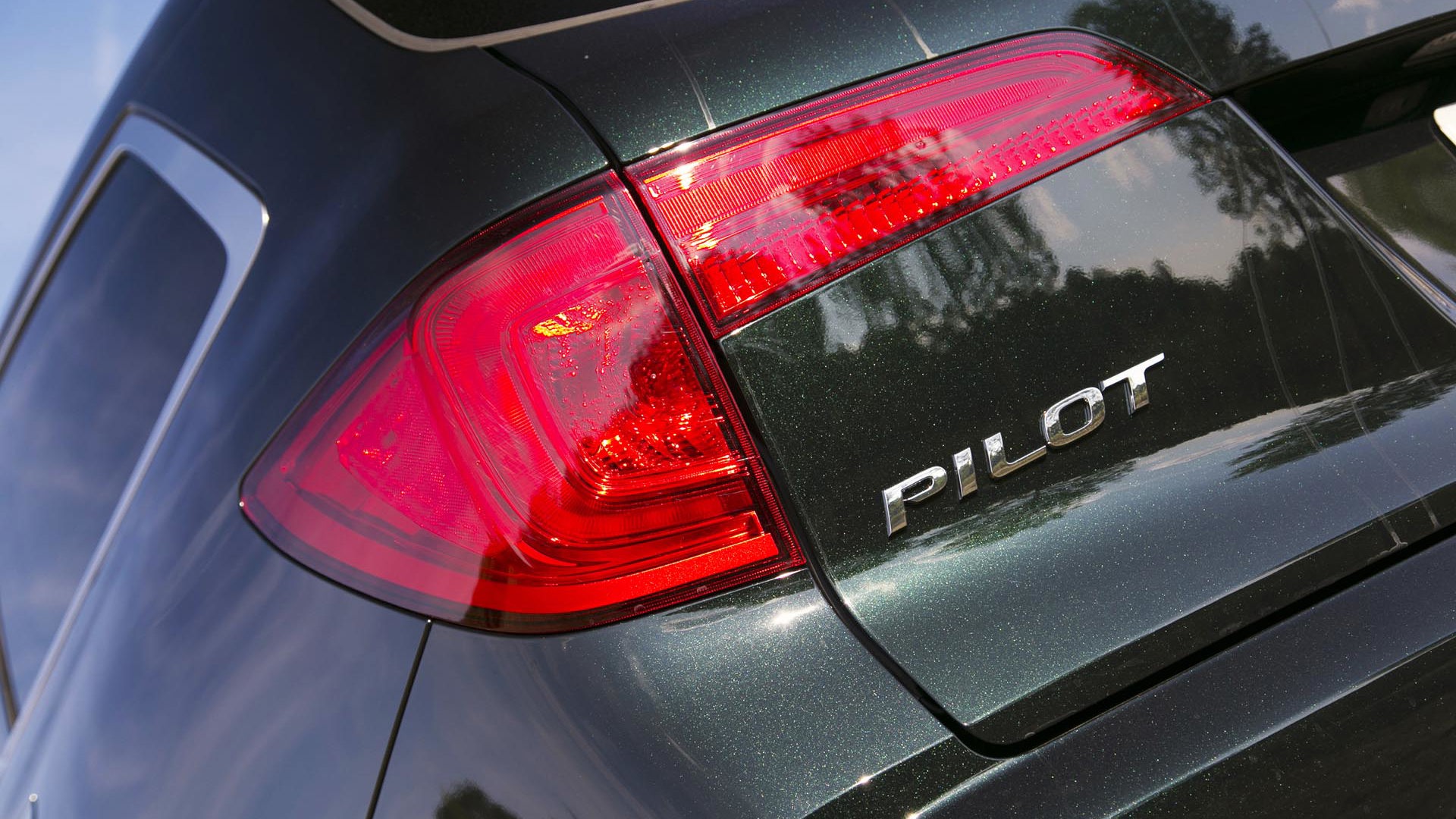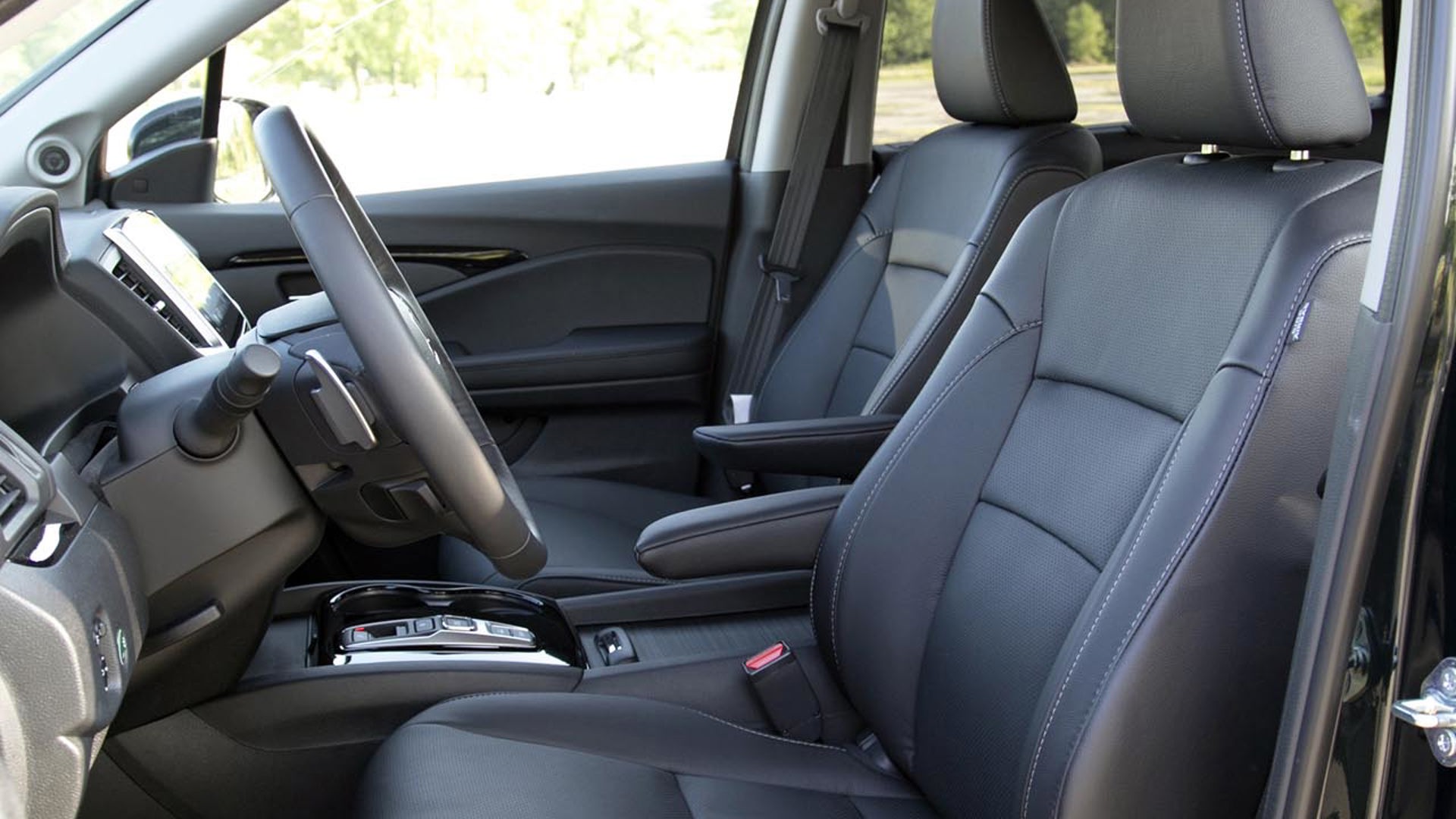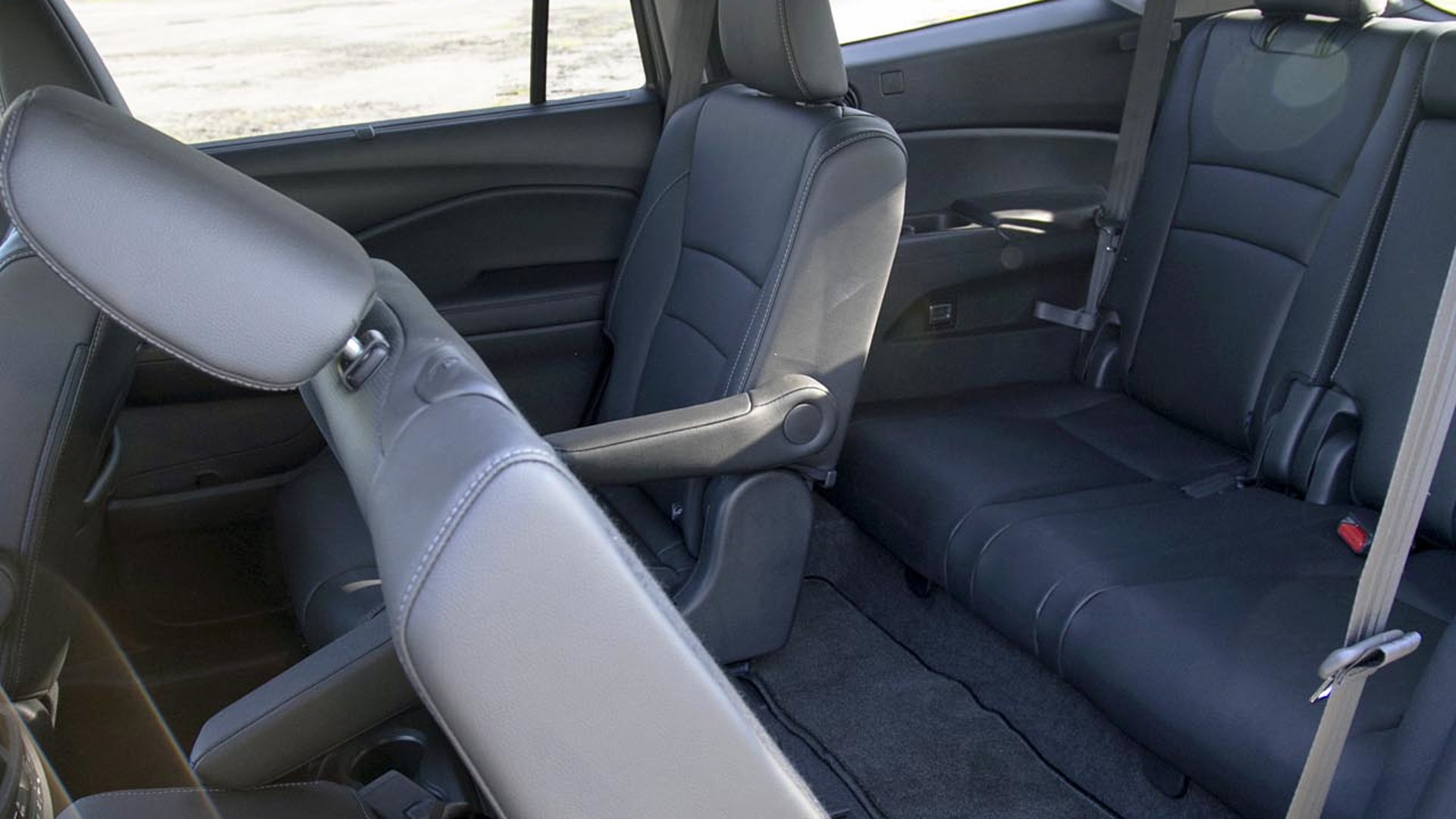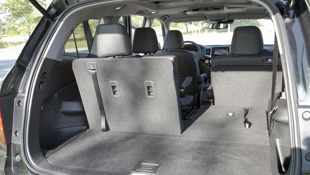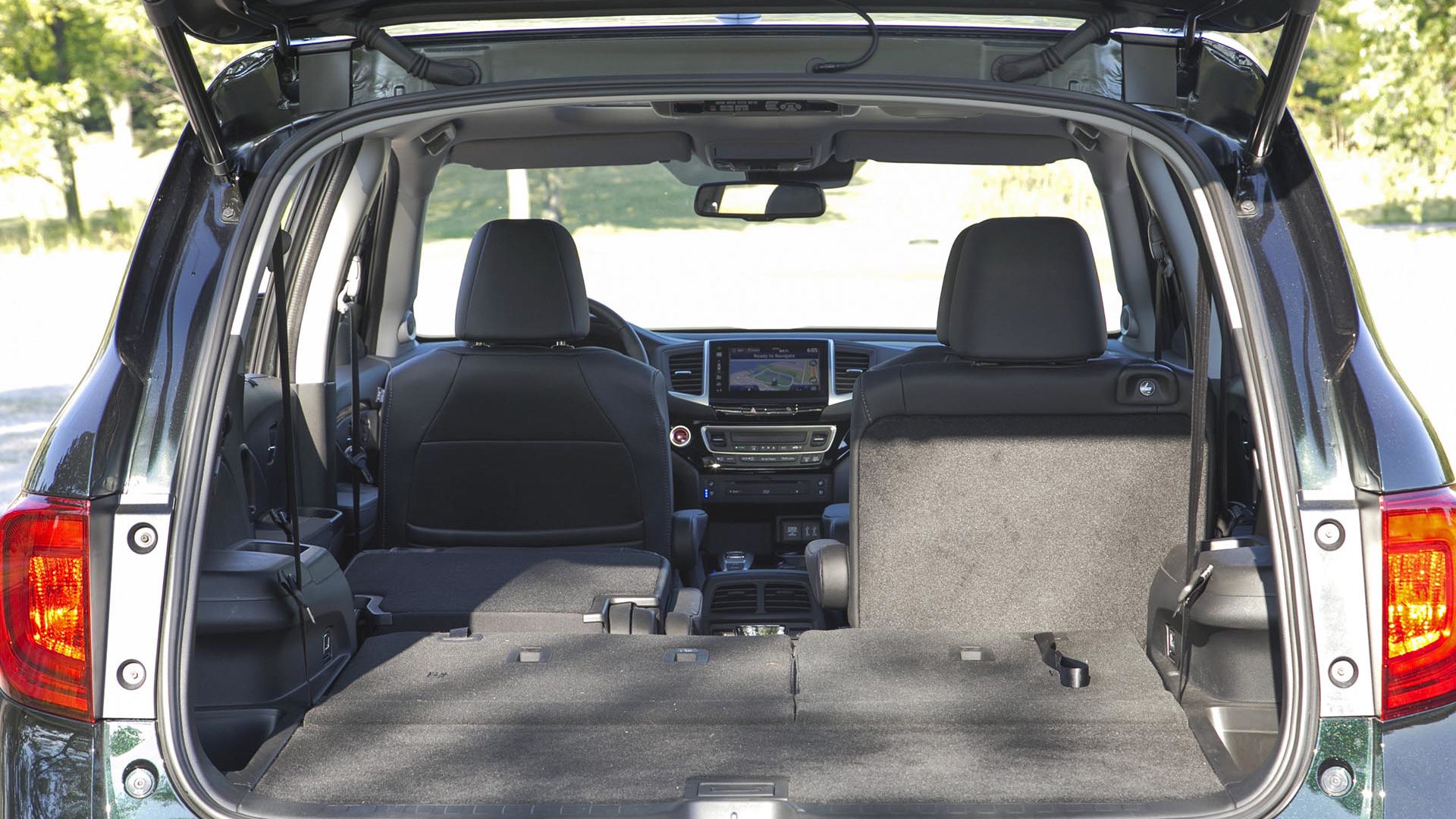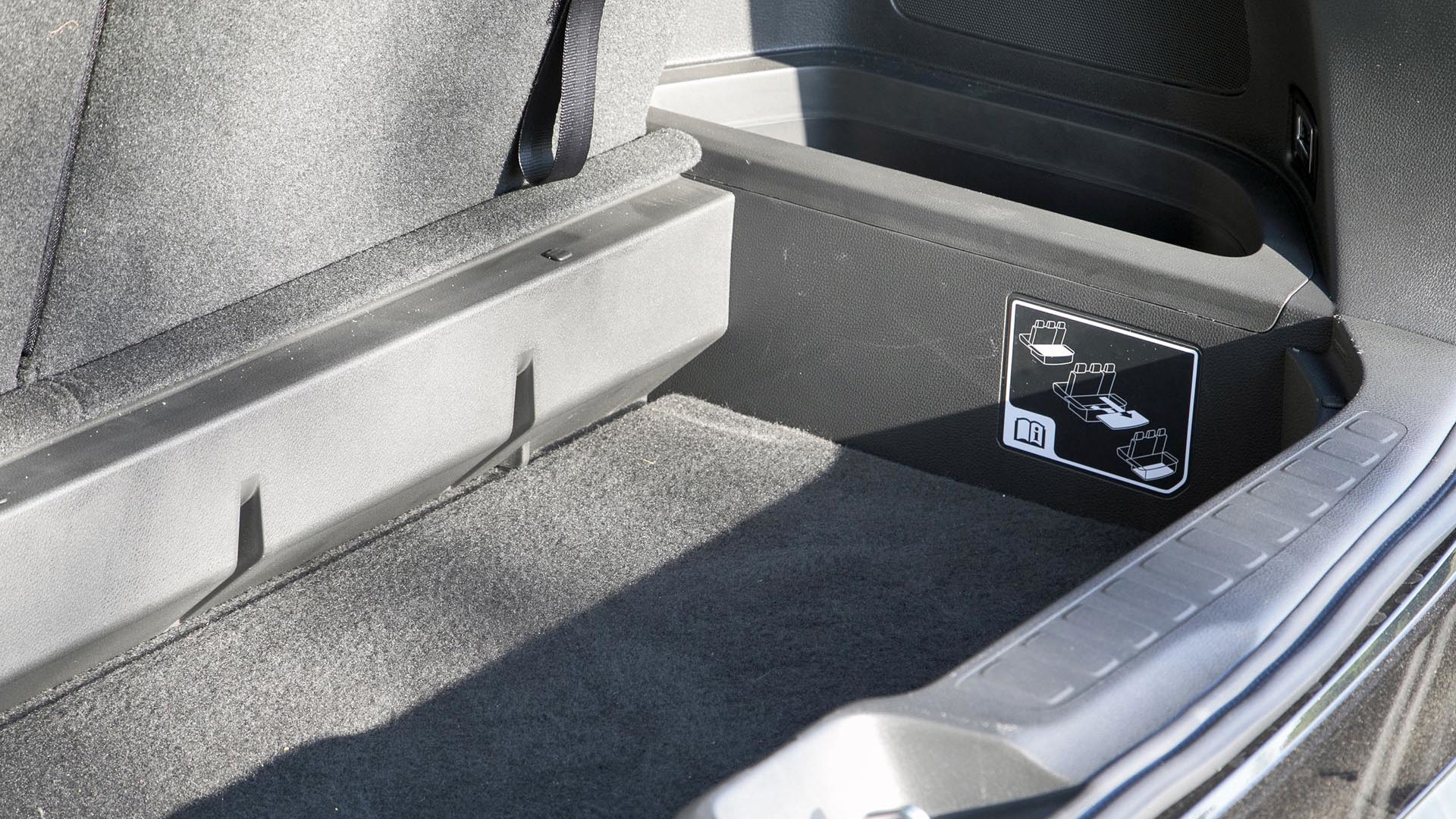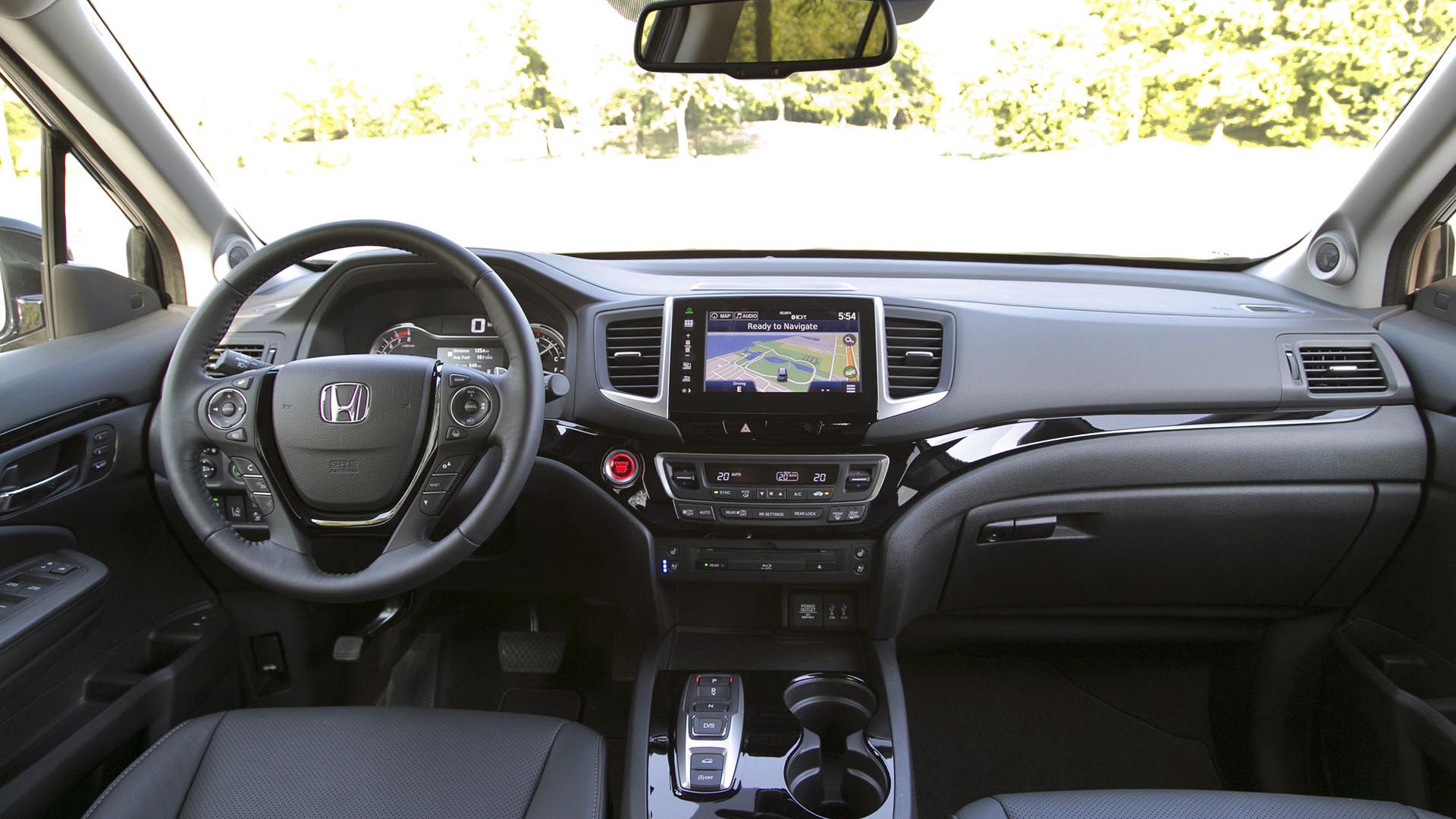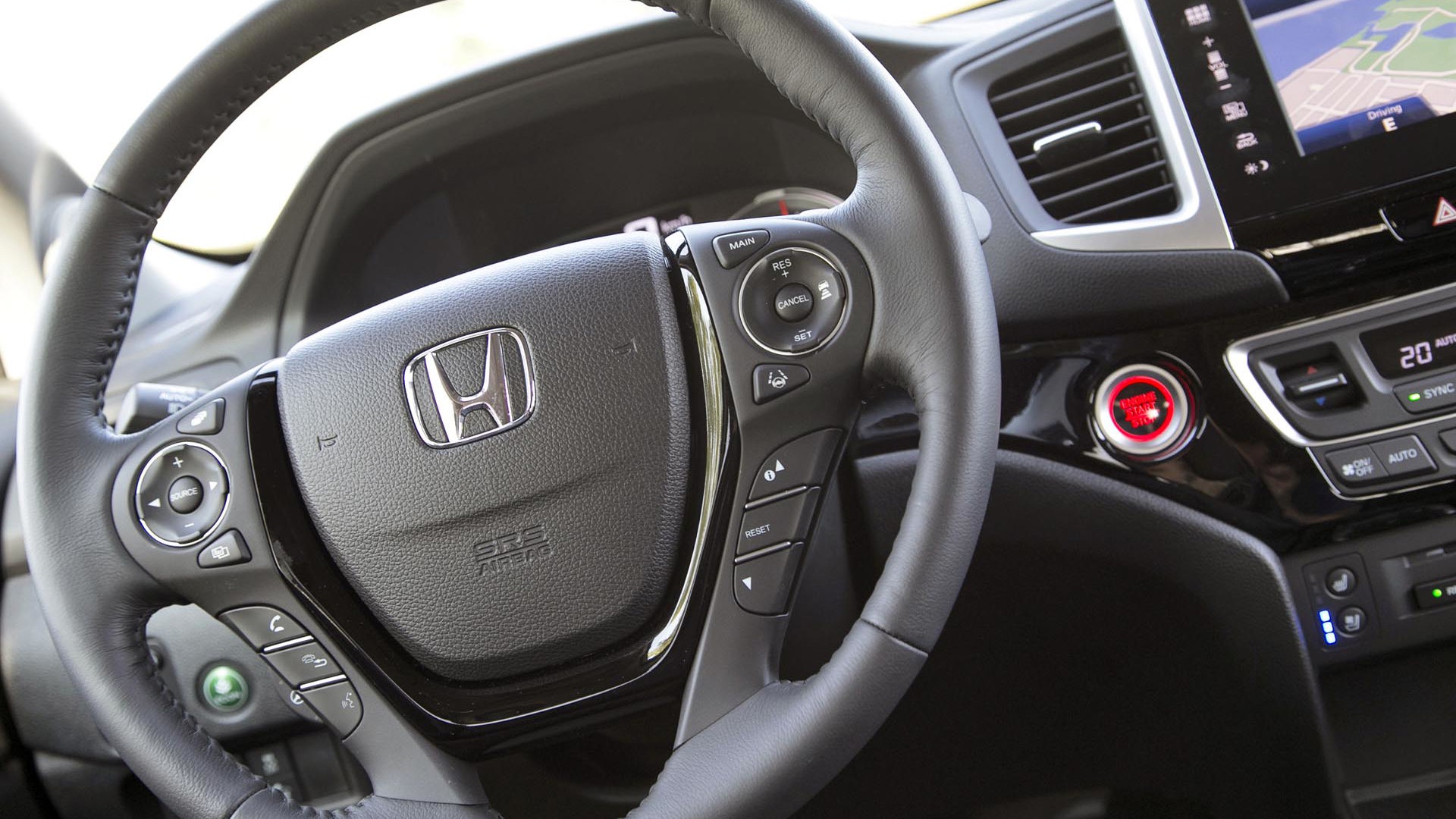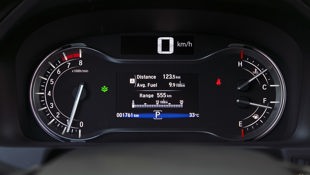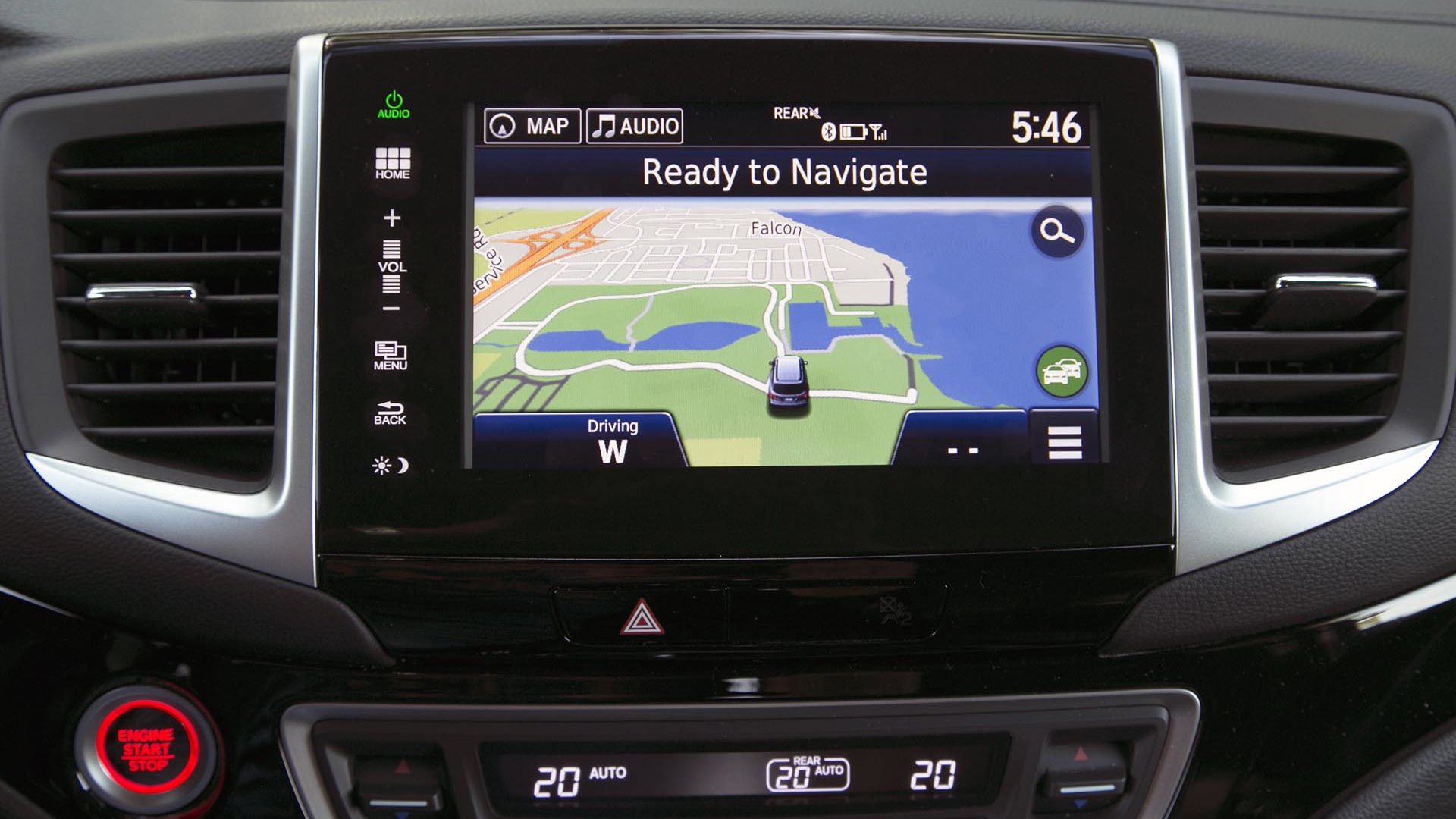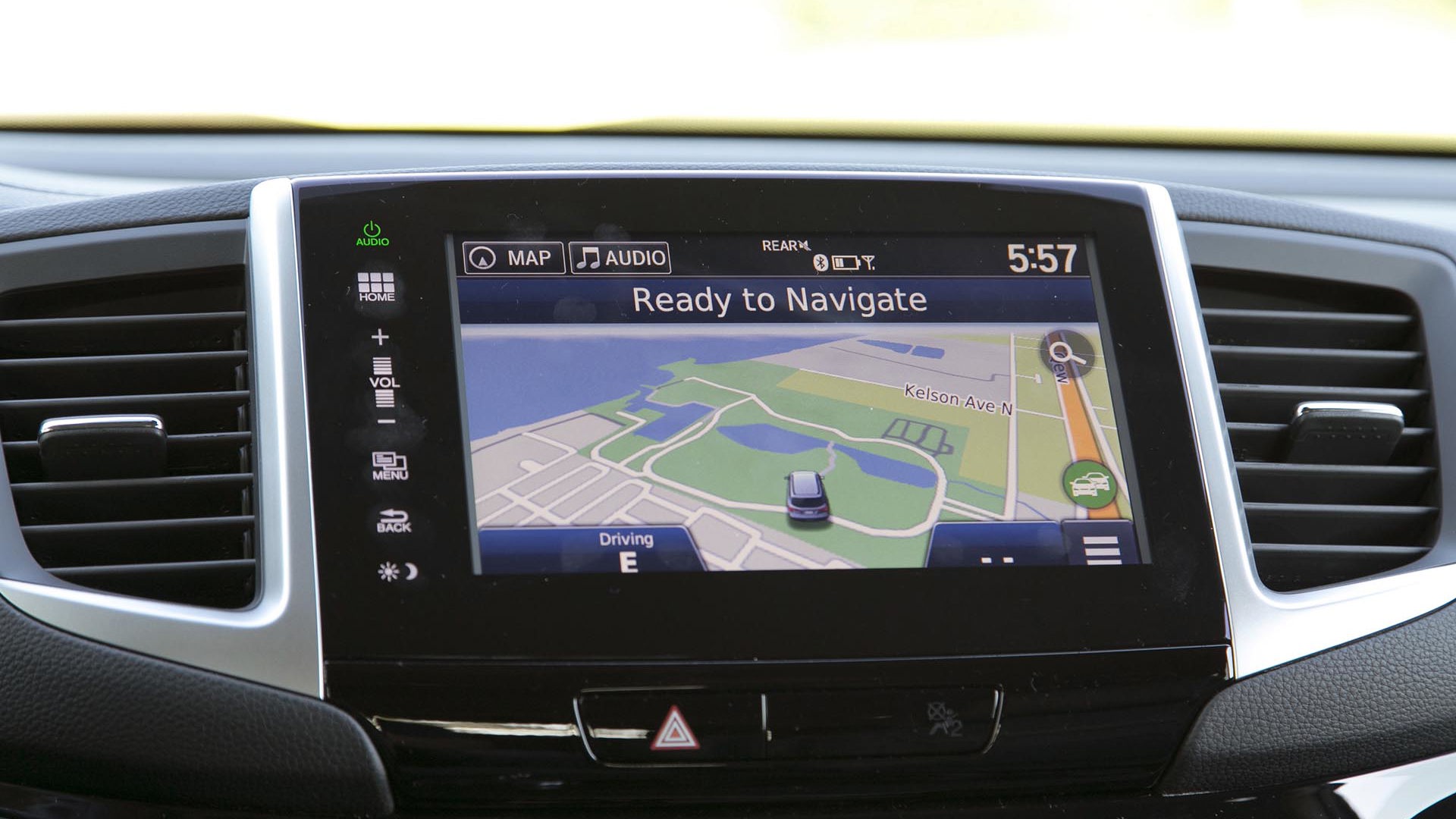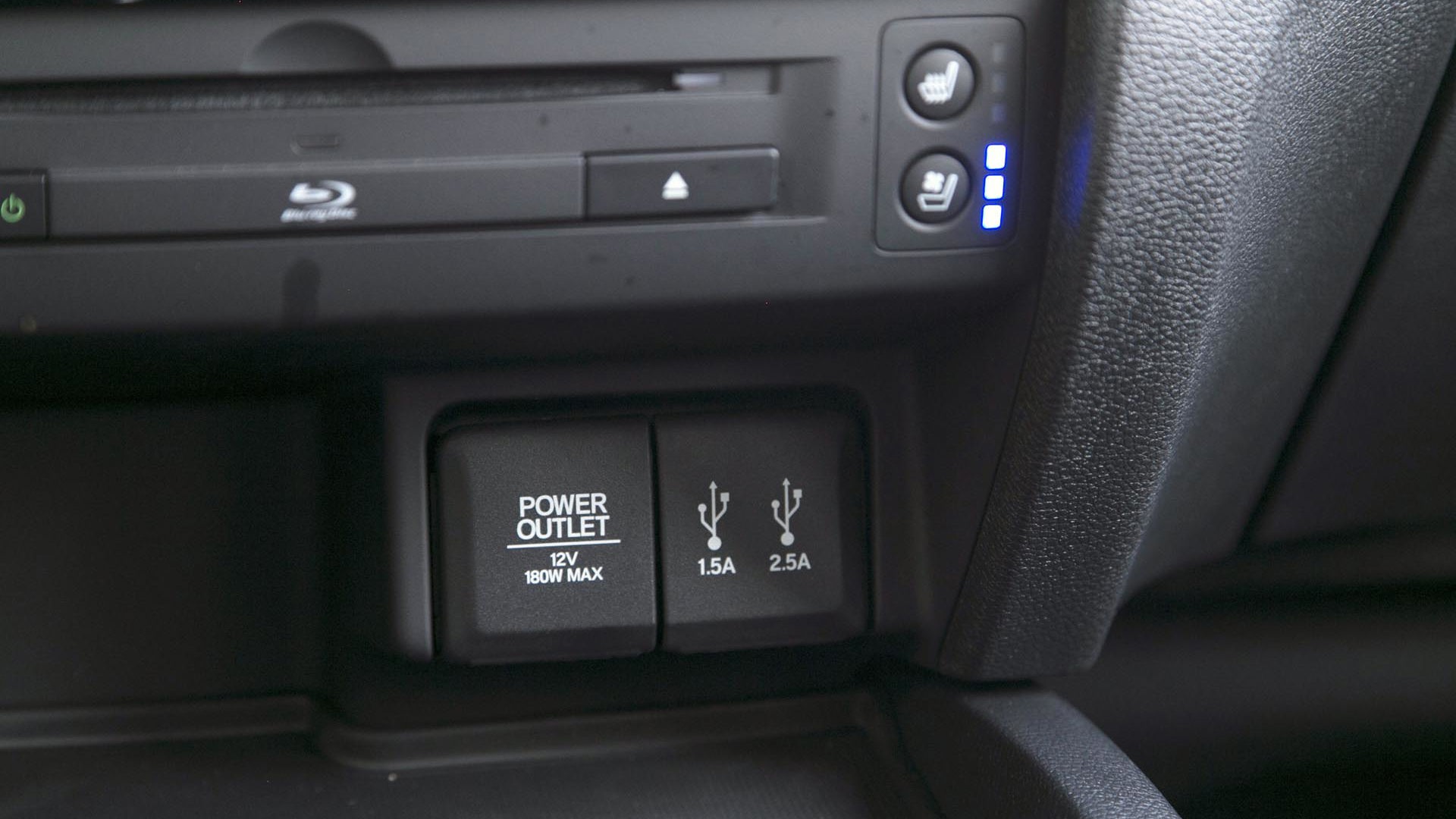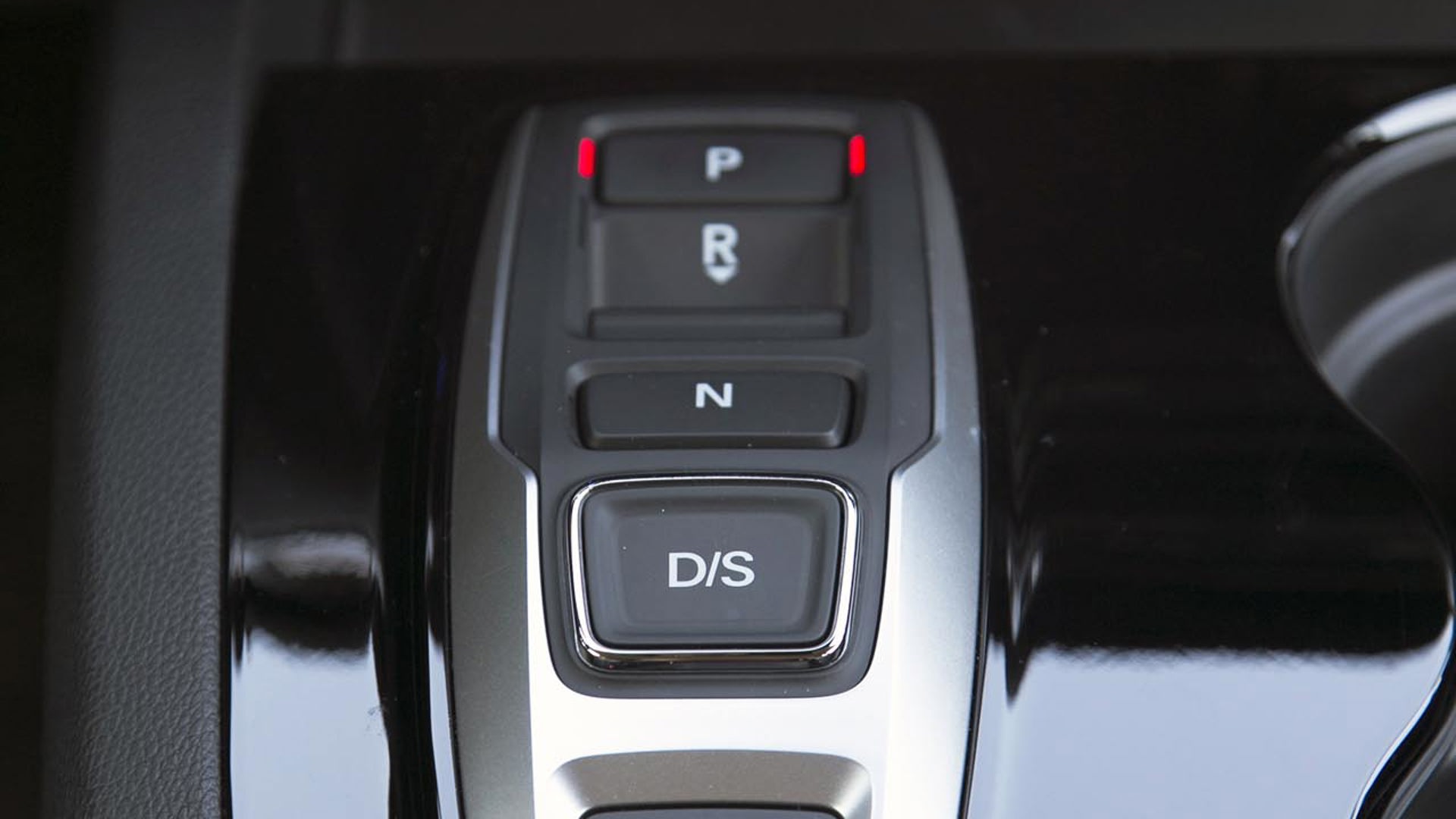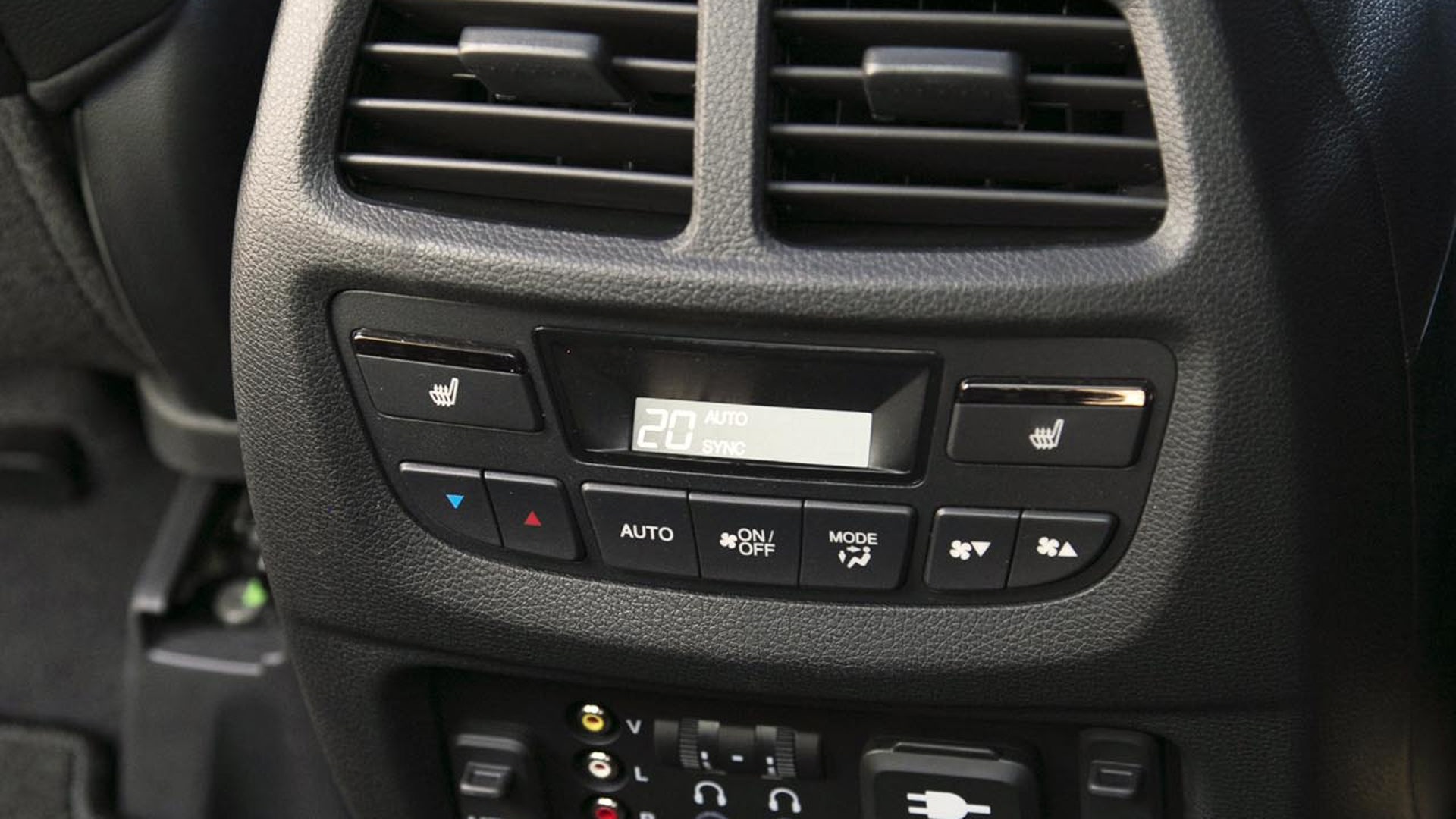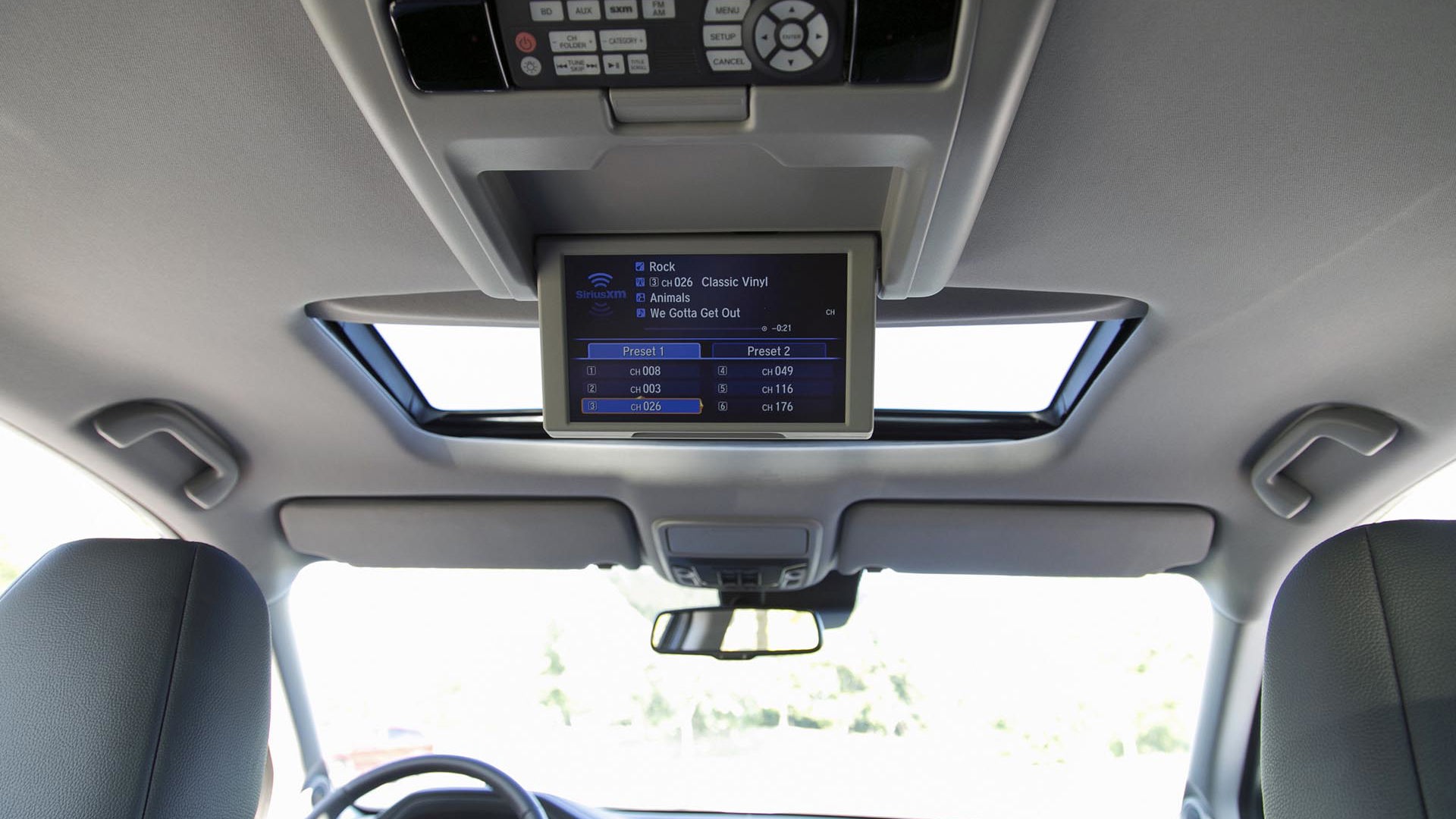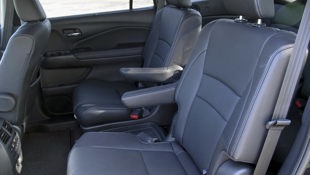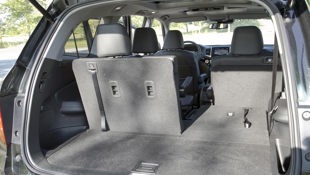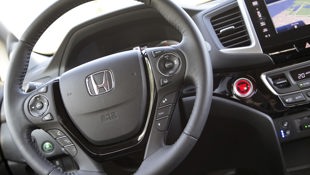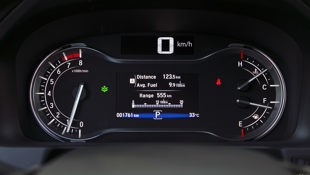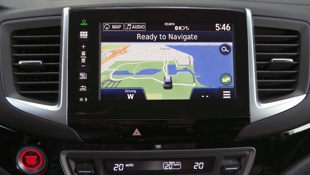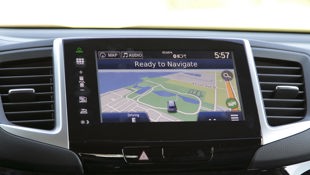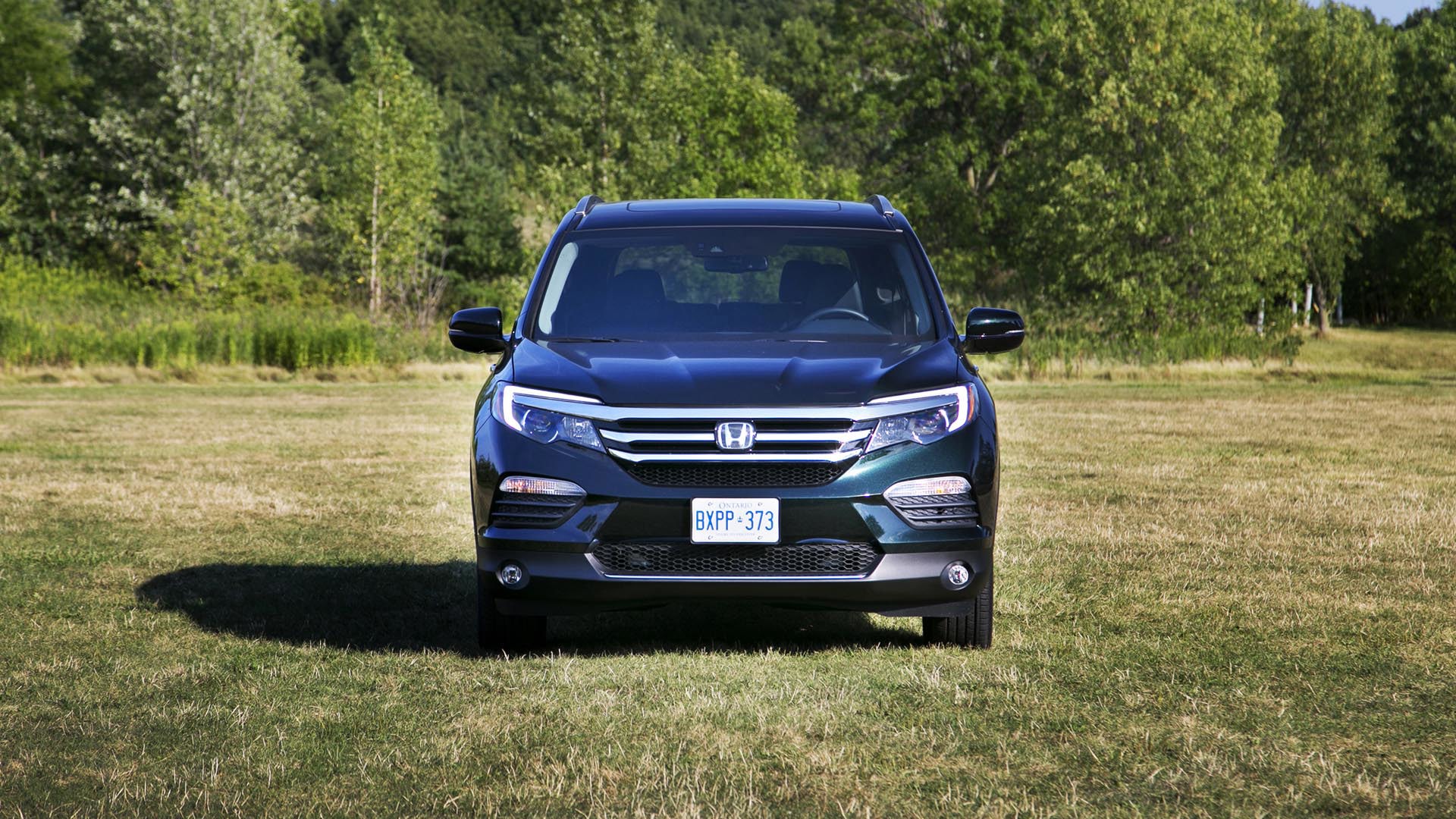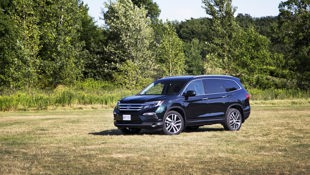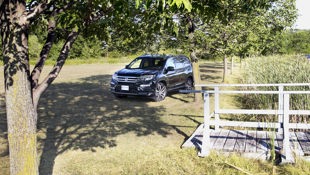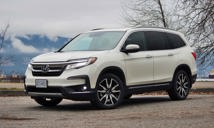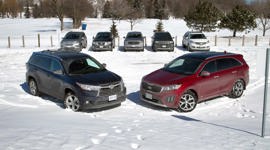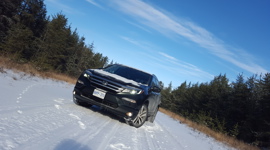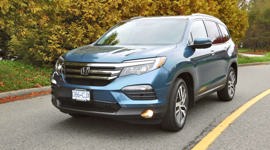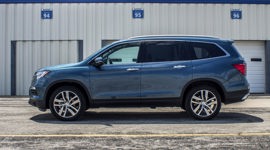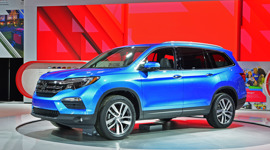 AutoTrader SCORE
AutoTrader SCORE
-
EXTERIOR STYLING7/10
-
INTERIOR8/10
-
PERFORMANCE7/10
-
COMFORT8/10
-
FUEL ECONOMY7/10
Ten years ago if you walked into a Honda dealership and demanded to see the brand’s most expensive model you’d be presented a racy little roadster, one that continues to be revered to this day, long after production has ceased.
Honda’s most prestigious offering is now a crossover SUV.
The S2000, as it was known, embodied so much of what Honda had excelled at over the years that it is destined to be a future classic. It featured an exhilarating engine that chased revs to the moon; offered but one transmission: a six-speed manual; and earned endless accolades for being one of the best handling cars ever.
Times have changed, though, and Honda still makes some mildly entertaining cars, but the focus has been redirected to comfort, efficiency and competency in the family realm beyond anything else. The flagship model now is a little different than it used to be since Honda’s most prestigious offering (excluding the Acura brand of course) is now a crossover SUV.
If the suitability of a vehicle with “Utility” as its middle name seems a bit askew for a halo model, look only as far as the new 2016 Honda Pilot’s levels of technology and luxury to make a case for it. Our test vehicle, a top-trim Touring model, features navigation via an eight-inch touchscreen infotainment system, adaptive cruise control and a suite of active safety functions that were little more than science fiction a decade ago.
Everywhere you look inside the new Pilot, the investment in passenger comfort and safety is obvious. From front seats that feature heated elements and cooling fans, to a pair of second row captain’s chairs, multi-zone climate control and greater passenger space for all three rows compared to last year’s model.
Honda has also taken what it’s learned in terms of maximizing interior space efficiency from their successful Odyssey minivan and applied it here. Nooks, crannies, cubbies and pockets abound throughout, ensuring an entire family’s worth of important items are kept in place during road trips and errand runs.
And it’s easier for the family to reach that third row of seats now that Honda has fitted the second row with simple push-button flip-and-slide action to allow access to the real back seat. It’s a slick system that works well.
Read more on autoTRADER: 2016 Honda Pilot: 10 things you need to know
The new Pilot is longer, lower and wider than last year’s model, if only incrementally adjusted in each case. More dramatic is the fresh styling for the Pilot that looks sleeker than before, thanks largely to the sweptback lights and shorter side glass profile. Despite losing some height, the new Pilot actually delivers greater overall interior passenger space, and more notably, cargo capacity at over 3,000 L of volume with both second and third row seats dropped. A quick look at the maximum cargo volume of the Pilot’s key competitors puts the Honda on top in this regard.
While more contemporary in its appearance, not everyone agrees with the new Pilot’s updated looks. My neighbours, after seeing the new 2016 model, decided it looked too much like every other mid-size crossover and promptly snatched up one of the remaining 2015 Pilot Touring models on the local Honda lot. To them, the distinctive, boxy styling of last year’s rig was endearing. The considerable discount offered on the older Pilot surely played a part in their decision-making, too.
For 2016 Honda has upped the cost of the Touring trim on the Pilot (from $51,609 to $52,185) which also puts it a few thousand more than its direct competitor, Toyota’s Highlander Limited.
The new Pilot offers a lot for what is a comparatively small investment versus the old Pilot, or its Toyota adversary. For one, the Honda Sensing suite of active safety features like Collision Mitigation Braking, Road Departure Mitigation, Lane Keeping Assist and Adaptive cruise control. Together these items effectively pick up the slack on a driver’s attention lapse and can help steer the Pilot back into its lane or brake to avoid a collision.
In theory, it is easy to assert that every vehicle should have these features to create safer drivers, however, I found the net result to be like driving with your extremely nervous Aunt Matilda in the car all the time. In hectic Toronto area traffic with all the features switched on, the Pilot seems to be constantly bombarding the driver with warnings both audible and visual.
“BRAKE!!!” the dashboard warning flared in bright orange as the highway ahead curved and the Pilot assumed the transport truck – safely within its own lane, as we were within ours – was surely going to cause impending doom.
If I had deviated from my lane, the Pilot would’ve expressed its displeasure in my driving by shaking the steering wheel with surprising violence in my hands. Other systems I’ve experienced will give a slight nudge, a subtle vibration and/or an audible warning. I found this system annoying enough when occasionally drifting to (not even past!) the white line, to switch it off and leave it that way for the rest of the week. While it will surely grab the attention of a daydreaming driver, it’s also bound to startle many folks too.
The adaptive cruise control system here (and as I have experienced on a number of Acura models) seems to leave an abundance of space between its nose and the tail of the vehicle ahead – so much space that in even moderate traffic, the Pilot is constantly being cut off by fellow motorists taking advantage of the large gap. What’s more when moving to the left lane to pass, the Honda seems to take its time assessing the situation before beginning to accelerate up to set cruising speed. This means quicker traffic approaching from behind is on your rear bumper sooner than you’d probably like.
The technology inside, specifically with the large, single eight-inch Display Audio System, is notably better than last year’s dated affair. The menus are simple and logically arranged and the navigation system’s maps are bright, pleasing 3-D maps that look properly contemporary. The only complaint with the new system – and it is a big one – is that Honda has once again neglected to provide a proper volume knob for the system, requiring instead the use of the steering wheel buttons (fine) or a touchpad slider that never operates quickly or precisely enough for my liking. Several times other functions on the touchscreen required a second or third tap before responding – simple, proper buttons don’t require that and are missed here.
The rest of the ergonomics are excellent. An analog tachometer and temperature / fuel gauge frame an LCD display and large digital speedometer in the primary gauge pod. All information on the gauges and the infotainment system is easily read at a glance, and the climate controls are operated by proper buttons and toggles, just the way it ought to be.
Driving the new Pilot Touring requires pushing more buttons, expressly to operate the new nine-speed automatic transmission. This transmission first showed up in the Acura TLX this past year and makes its first appearance in a Honda-badged product in only the top-trim Pilot. In normal driving, the shifts are smooth enough to be unnoticeable, and should you find yourself suddenly and unexpectedly in the middle of a race and really need to snap off some quicker shifts, Honda has thoughtfully provided paddle shifters to do so. I tried them and they work, but I can’t imagine anyone using them on a regular basis in a vehicle like this.
In “S” (sport) mode, the transmission will not stay in ninth gear, dropping back to eighth even when forced up via the paddles. The computers operating the transmission are smarter than we are, so most people are going to be content to let them do their thing without human interaction.
Also in “S” mode (versus “D”), the throttle responsiveness is adjusted, allowing for swifter acceleration and gears to be held a bit longer as higher revs are reached. The difference between “S” and “D” with the ECO button pushed is remarkable. The former allows for decent acceleration for a crossover, but the latter presents a very sluggish feel away from a standstill.
The ECO mode (including auto stop/start), nine-speed transmission and the reduced mass has helped the new Pilot reduce its fuel consumption considerably. City average is rated at 12.4 L/100 km; highway at 9.3, and combined at 11 even. That last figure betters the 2015 Pilot by 1 L/100 km. For most people, the increase in frugality will equate to a few hundred bucks in fuel savings each year. We saw an average during our week with the Pilot in the low 10’s with a pretty even highway/city split of driving and thankfully, the new Pilot only requires regular fuel.
What makes the improvement in fuel efficiency even more impressive is that the ’16 Pilot’s V6 engine, still displacing 3.5L, puts out considerably more power than last year’s 3.5L V6. At 280 hp, it’s up 30 from last year and torque is also up from 253 to 262 at slightly lower revs, enabling a more responsive feel. This is ample gusto for the Honda to execute passing moves safely and rapidly, even with a load of passengers or cargo (or both).
Touring trim models now wear 20-inch wheels with 50-series tires. This set up does transmit the nastiest potholes to the cabin with a bit of harshness, but overall, Honda’s engineers should be commended for developing a Pilot with a surprisingly supple ride. Road, wind and engine noise are all remarkably quiet in the new Pilot as well, contributing to its luxurious feel.
Handling is about as good as one can expect from a large, tall, seven-passenger crossover, and steering feel is fairly numb, though nicely weighted. Braking is solid with a firm and consistent pedal feel.
Honda has declared this to be the Year of Honda. The CR-V compact crossover was refreshed for 2015 with excellent results and has recently been joined by the all-new and smaller HR-V crossover and as a result, the “light truck” sales have helped push Honda Canada’s sales to an all-time high for July, this year. With the 2016 Pilot arriving at dealerships now – and being as good as it is – Honda is assured of further sales successes in the coming months. It even makes a pretty good flagship for the Honda brand, even if it is a crossover SUV.
| Warranty: 3 years/60,000 km; 5 years/100,000 km powertrain; 5 years/unlimited distance corrosion perforation; 3 years/unlimited distance roadside assistance Competitors: |
| Model Tested | 2016 Honda Pilot Touring |
|---|---|
| Base Price | $50,490 |
| A/C Tax | $100 |
| Destination Fee | $1,824.75 |
| Price as Tested | $52,414.75 |
|
Optional Equipment
None
|
|
